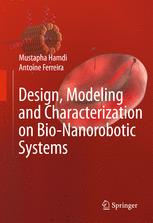

Most ebook files are in PDF format, so you can easily read them using various software such as Foxit Reader or directly on the Google Chrome browser.
Some ebook files are released by publishers in other formats such as .awz, .mobi, .epub, .fb2, etc. You may need to install specific software to read these formats on mobile/PC, such as Calibre.
Please read the tutorial at this link: https://ebookbell.com/faq
We offer FREE conversion to the popular formats you request; however, this may take some time. Therefore, right after payment, please email us, and we will try to provide the service as quickly as possible.
For some exceptional file formats or broken links (if any), please refrain from opening any disputes. Instead, email us first, and we will try to assist within a maximum of 6 hours.
EbookBell Team

0.0
0 reviewsNanorobots represent a nanoscale device where proteins such as DNA, carbon nanotubes could act as motors, mechanical joints, transmission elements, or sensors. When these different components were assembled together they can form nanorobots with multi-degree-of-freedom, able to apply forces and manipulate objects in the nanoscale world. Design, Modeling and Characterization of Bio-Nanorobotic Systems investigates the design, assembly, simulation, and prototyping of biological and artificial molecular structures with the goal of implementing their internal nanoscale movements within nanorobotic systems in an optimized manner.
Design, Modeling and Characterization of Bio-Nanorobotic Systems focuses, mainly on two approaches. The first one involves multiscale modeling tools (quantum mechanics, molecular dynamics, continuum mechanics) coupled to virtual reality advanced techniques. In order to design and evaluate the characteristics of molecular robots, we proposed interactive nanophysics-based simulation which permits manipulation of molecules, proteins and engineered materials in molecular dynamics simulations with real-time force feedback and graphical display. The second approach uses a novel co-prototyping methodology, where the nanorobotic’s multiscale model is coupled to experimental measurements.
Design, Modeling and Characterization of Bio-Nanorobotic Systems presents a novel concept of nanorobots, bio-nanoactuators based DNA and rotating nanodevices based carbon nanotubes. In addition the presented platform helped to characterize the interaction between novel drug delivery systems and cellular membrane.